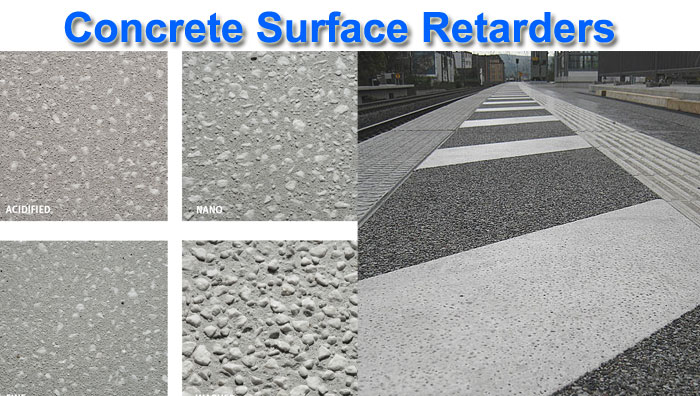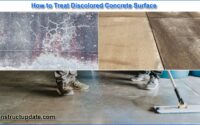Concrete Surface Retarder | Types of Concrete Retarder | Advantages, Disadvantages
What Is Concrete Surfaces Retarder?
Concrete Surface retarders, also known as surface “deactivators,” are used to chemically delay the set of the surface mortar on new concrete. They allow the rest of the concrete to cure properly, without altering the setting rate or strength gain, unlike concrete set retarders.
Because concrete surface retarders function by slowing the hydration process at a specific depth, the underlying concrete will harden properly while the surface paste can be easily removed later.
The depth of aggregate reveal is more uniform with minimal pop-outs whenever you’re ready to expose the aggregate by hosing or high-pressure washing.
When Should Concrete Surface Retarder Be Used?
After all finishing operations have been done and the bleed water has dissipated, the optimal time to apply surface retarder is after all finishing procedures have been completed and the bleed water has dissipated.
Sealing the concrete or applying curing agents first may prevent the retarder from working properly.
Using a low-pressure sprayer or a roller, uniformly apply surface retarder to the surface. Many surface retarders are designed to generate a layer that acts as a temporary curing agent and protects the concrete from mild wind and rain.
If there is going to be a lot of wind or rain, you should cover the surface with plastic sheeting.

Types of Concrete Retarders
- Organic Retarders
- Lignosulphonates
- Hydroxycarboxylic acids and their salts
- Phosphonates
- Sugars
- Inorganic or Chemical Retarders
- Phosphonates
- Borates
- Salts of Pb, Zn, Cu, As, Sb
- Air Entrainment
Although most retarding admixtures do not entrain air, some types of retarders do. These, particularly those based on hydroxycarboxylic acid, may actually reduce the amount of air in the system.
- Freeze-Thaw Cycles
To improve the freeze-thaw resistance of concrete, air-entraining admixtures are frequently employed. When the water in the concrete begins to freeze, the air cells serve as microscopic expansion chambers for the ice.
- Bleeding
Because retarding admixtures postpone the start of the setting process, retarded concretes are more prone to bleeding.
4. Strength
The initial compressive strength of concrete treated with retarding admixtures is lower than that of a similar concrete that has not been treated with retarding admixtures.
5. Workability and Rheological Values
Retarding admixtures also have a minor impact on concrete workability. They can produce a 60-100mm increase in first slump.
6. Slump Loss
Slump-retarding admixtures have been shown to be particularly successful at reducing slump loss and thereby increasing initial workability.
7. Heat of Hydration
Retarding admixtures do not diminish the heat output of concrete, but they do postpone the rise of the peak temperature by a similar time interval as the concrete was retarded.
8. Volume Deformation
The use of retarding admixtures has little effect on creep or drying shrinkage, however, plastic shrinkage may be somewhat enhanced.
If the concrete is installed correctly.
Durability of Concrete Surface Retarder
If the concrete is properly cured, retarded concrete should last as long as normal concrete.
Advantages of Retarder in Concrete
Concrete retarders are a boon for the construction process in the long run, and a few significant benefits are outlined below for your reference.
Concrete retarding admixtures lengthen the time it takes for concrete to set and keep its workability and cohesiveness for a longer amount of time.
A concrete retarder is used in major building projects to prevent cold joints from forming in subsequent lifts and to make concrete workable.
You can compensate for the accelerated effect of high temperature on the first setting time and reduce the dangers of long-distance delivery in hot weather by using concrete retarders.
The use of retarding admixtures enhances the permeability of concrete by extending the time it takes for it to set and improving its workability.
When poor sand grading is unavoidable, concrete retarders aid to decrease segregation and bleeding.
Disadvantages of Concrete Retarders
Everything comes with a set of safeguards, or disadvantages, as the case may be. In the case of concrete retarders, the same is true.
There are a few major drawbacks of concrete retarders that you should be aware of before employing them in your building project.
Concrete retarders can be used with water-reducers, although care must be given throughout the curing process to minimize bleeding and cracks.
The dosage of retarding admixtures must be controlled based on the cement’s water-cement ratio, cement content, and C3A concentration.





